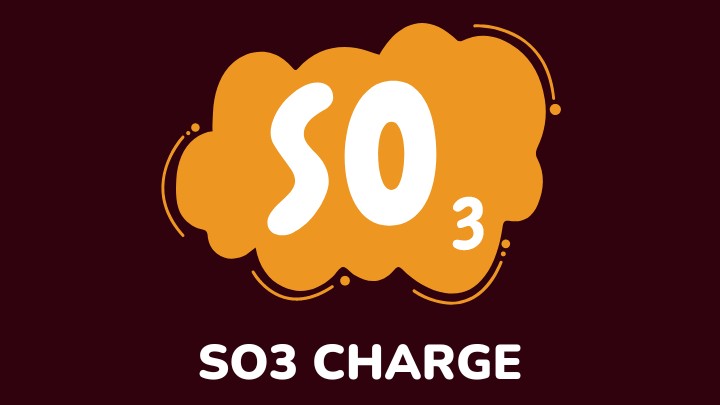SO3, sulfur trioxide, is the acid anhydride of sulphuric acid. It is produced as an intermediate product of the contact process, the synthesis of sulphuric acid. It is often mistaken for SO32- but it is different.
The first difference between both molecules is that SO3 has no charge but SO32- is an anion. Despite being a neutral compound, the individual atoms in SO3 have their unique charges.
Read this article to learn about the charge of sulfur trioxide and its differences between SO3 and SO32-.
About SO3
Sulfur trioxide is an oxide of sulfur with a molar mass of 80.066 g/mol. From the chemical formula, it contains one central sulfur atom and three oxygen atoms.
A little below room temperature, SO3 exists as a solid but it can also exist in other forms. It may exist as a gaseous monomer, solid polymer, or crystalline trimer.
Furthermore, SO3 is a strong Lewis acid and oxidizing agent. It is commonly used in sulfonation reactions.
What is the charge of SO3?
SO3 is a neutral molecule and does not carry any charge. It has an overall charge of 0 because the +6 oxidation state of S neutralizes the -6 oxidation state of the three oxygen atoms in the compound.
What is the oxidation state of S in SO3?
The oxidation state of S in SO3 is 6. Substitute -2 as the oxidation number of O in the chemical formula.
S + 3(-2) = 0
S = +6
What is the oxidation state of O in SO3?
The oxidation state of O in SO3 is -2. We can determine this by substituting the oxidation state of S into the chemical formula and equating it to the overall charge (0) of the compound.
6 + 3O = 0
3O = -6
O = -2
What is the formal charge of the atoms in SO3?
Formal charge = valence electron – non-bonding valence electron – bonding electrons/2
FC = V – N – B/2
Sulfur has 6 Valence electrons, 0 non-bonding electrons, and 12 bonding electrons.
The formal charge of sulfur S
S = 6 – 0 – 12/2 = 0
Next, the formal charge of oxygen O
O has 6 valence electrons, 4 non-bonding electrons, and 4 bonding electrons.
O = 6 – 4 – 4/2 = 0
What is the difference between SO3 and SO32-?
SO3 is sulfur trioxide while SO32- is the sulfite ion. The former is a neutral molecule while the latter is an anion.
Furthermore, SO3 has a charge of 0 while SO32- has a charge of -2. In SO3, all the oxygen share double bonds with the central sulfur atom.
On the other hand, only one oxygen atom in SO32- shares a double bond with sulfur. The two other oxygen atoms bond with sulfur through single bonds and have a formal charge of -1 each.
The sum of the individual -1 charge on each oxygen atom gives the overall -2 charge on the sulfite ion.
FAQs
What is the hybridization of SO3?
The hybridization of SO3 is sp2. The central sulfur atom lies in the middle and shares bonds with three oxygen atoms. It has a bent or trigonal planar structure with the bond angles lying at 120°.
The sp2 hybridization is a result of the combination of sigma and pi bonds between the sulfur atom and each oxygen atom. Also, there is an even distribution of charge which makes SO3 a nonpolar molecule.
What are the differences between SO3 and SO2?
Both compounds are sulfur oxides but SO3 is sulfur trioxide and SO2 is sulfur dioxide. They are also both acidic but SO3 is an oxidizing agent while SO2 is a reducing agent.
Additionally, SO2 is a colorless gas with a strong choking smell, while SO3 is the intermediate product in the synthesis of sulphuric acid.
Conclusion
SO3 is not SO32-. It is a neutral compound because the total number of protons in it is equal to the total number of electrons. There are no extra or deficient electrons in the compound.
SO32-, on the other hand, has extra electrons on two of the three oxygen atoms, which gives it its overall 2- charge.
You can also learn about the molecular and electron geometry and hybridization of SO3.
Thanks for reading.
